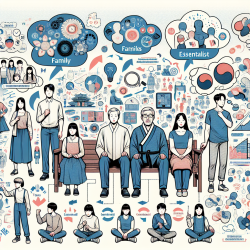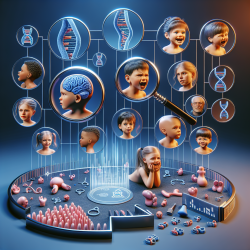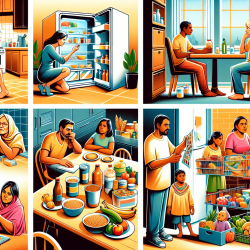Understanding the Impact of Family Structures on Adolescent Mental Health
In the realm of speech-language pathology and child development, understanding the nuances of family dynamics is crucial for creating effective therapeutic interventions. A recent study titled Associations between Gendered Family Structures and Adolescent Stress, Loneliness, and Sadness in South Korea offers valuable insights into how different family structures affect adolescent mental health. This research, conducted using data from the 2021 Korea Youth Risk Behavior Survey, challenges traditional notions about the roles of mothers and fathers, especially in non-Western contexts.
Key Findings from the Research
The study explores the mental health outcomes of adolescents living in various family structures: two biological parents, single mothers, and single fathers. Here are some key findings:
- Adolescents in single-parent families reported higher levels of stress, loneliness, and sadness compared to those living with both parents.
- Girls in single-father families exhibited the highest levels of loneliness and sadness, highlighting potential gender-specific impacts.
- Contrary to some Western findings, adolescents in single-mother families in Korea showed slightly better mental health outcomes than those in single-father families.
Implications for Practitioners
For practitioners working with children, these findings emphasize the importance of considering family structure and cultural context when assessing mental health. Here are some strategies to implement:
- Tailored Interventions: Develop intervention plans that consider the unique challenges faced by adolescents in single-parent households, particularly those led by fathers.
- Cultural Sensitivity: Recognize the influence of cultural norms on family dynamics and adolescent mental health, especially in non-Western contexts.
- Gender-Specific Support: Provide targeted support for girls in single-father families to address their heightened vulnerability to loneliness and sadness.
Encouraging Further Research
This study opens the door for further exploration into how gender roles and family structures influence child development across different cultural settings. Practitioners are encouraged to engage with this research and consider its implications for their practice. Additionally, expanding research to include diverse family types, such as stepfamilies or those with grandparents as primary caregivers, could provide deeper insights into family dynamics and child well-being.
To read the original research paper, please follow this link: Associations between Gendered Family Structures and Adolescent Stress, Loneliness, and Sadness in South Korea.










